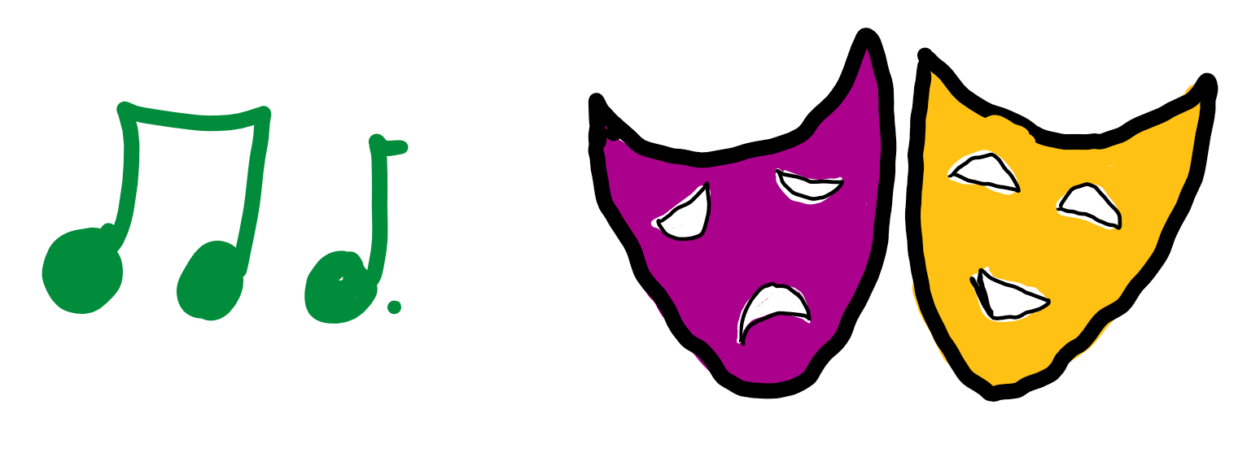On the 6th of October 2020 we had our first inputs on Drama and Music.
It is understandable that some people may feel apprehensive about a Drama input as it requires a degree of vulnerability and the willingness to feel foolish. However, I felt excited to engage in a dynamic form of learning after only one day of online university. The chance to move and collaborate with peers was much appreciated. If this is true for adults then it is certainly true for children. Frequently, formal education requires children to sit still and listen; drama offers the opportunity to participate and create as part of learning. This will come naturally to many young children; having a learning process which complements this instinctive behaviour would therefore be advantageous. (Farmer, 2011)
Angela was so confident and joyful in her teaching, I was also eager to participate; something I would be keen to emulate in my own practice. Her enthusiasm was infectious and the range of ways drama could be used as a teaching strategy was exciting. For my own practice, I can see that the playful nature of the lesson would build on the innate skills that children have. This could be seen as diametrically opposed to the prevailing landscape of education (TED, 2006). Rather than discouraging their creativity, their imagination and play is an essential part of the lesson. In this way, creative teaching can offer a vital opportunity for children to be creative.
I was particularly interested in how Drama could be used in social studies, such as history. Using an image as a prompt, small groups spent time thoroughly investigating and discussing what they could see. A range of drama strategies were then used to deepen the children’s understanding (Baldwin., 2009).Their sense of discovery and excitement and creating meaning was palpable. They made Soundscapes, Tableaus and used Thought Tracking to share their learning with the rest of the class. This seemed to be an excellent way to harness a child’s imagination to engage them in another time and place. I am also interested in the possibilities it presents for allowing children to access primary sources as a way to discover and make their own conclusions. This avenue for analysis and evaluation is an opportunity for children to develop their higher order thinking skills. (Churches, 2008).
The Drama input was followed by Music, where Julie reassured us that to teach music we did not need to be professional musicians. This is reiterated in the supporting materials; all that is required is that we allow children to participate in and we ourselves are willing to teach and learn through music. (Daubney., 2017)
In this input we engaged with a listening task. After listening to a piece of music as a whole class, we broke off into groups and created a story based on what we had heard. It was interesting to compare the similarities and differences as we came back together as a whole group.

It was particularly enjoyable that there was no right answer, each group could have vastly dissimilar stories but each would be equally valid. The images the music had conjured up for each of us and the way it made us feel were not set against any rubric so there was no risk of failure.

Learning to collaborate and learning through collaboration is acknowledged in Bloom’s Digital Taxonomy as an essential skill for the world of work in the twenty first century (Churches, 2008). These kinds of activities, therefore, can engage students in discrete disciplines but also develop skills that are relevant across the curriculum and post formal education.
As a classroom assistant, I have seen the practical ways music can be used, both as a tool for learning as well for classroom management. For the latter, I have often seen teachers use “tidy up songs” as an indication that a lesson has come to a close or use a quiet, often classical, piece of music to play when children are engaged in quiet work. If the the music cannot be heard, then the class volume needs to be reduced. This can also give children exposure to music they might not otherwise have and helps create a calm atmosphere.
I have also seen music used to aid spelling.
Spelling songs are useful to support children in their reading and writing, particularly auditory learners. If they asked how to spell a word, instead of laboriously looking up a short word in a dictionary, the teacher, I or fellow pupil would sing or even hum the tune. This usually triggered their memory. Instead of looking elsewhere for the answer, the children realised that they had the tools to help themselves.
In a similar way, when a child came across a word they couldn’t decode phonetically, we would sing the associated song, pointing to each letter as we sang the letter name.
Both of these inputs demonstrate the way Music and Drama can be embedded across the curriculum, in ways which add meaning and provide scope for creativity. I am looking forward to expanding my knowledge in these areas and develop my skills in creative teaching.
References
Baldwin, P. (2009) Improvement Through Drama; A creative whole class, whole school continuum. London: Bloomsbury Publishing PLC
Churches, A. (2008) Bloom’s Digital Taxonomy.
Daubney, A. (2017) Teaching Primary Music. London: Sage
Farmer, D. (2011) Learning through Drama in the Primary Years. California: CreateSpace
TED (2006) Do schools kill creativity? February 2006. Available at: https://www.ted.com/talks/sir_ken_robinson_do_schools_kill_creativity?language=en (Accessed: 10 October 2020).
Eisner, E. (2002) The Arts and Creation of Minds. New Haven: Yale University Press.


